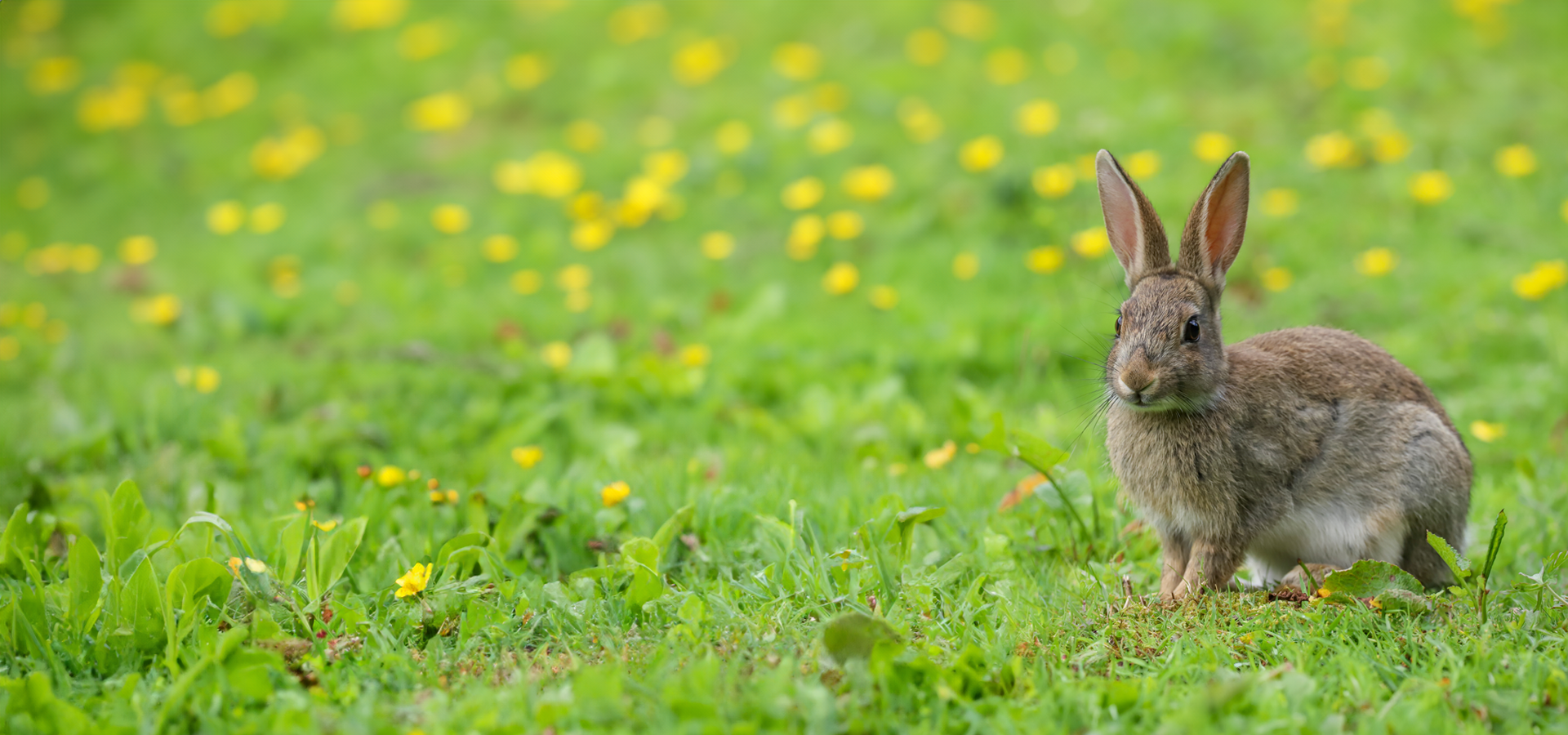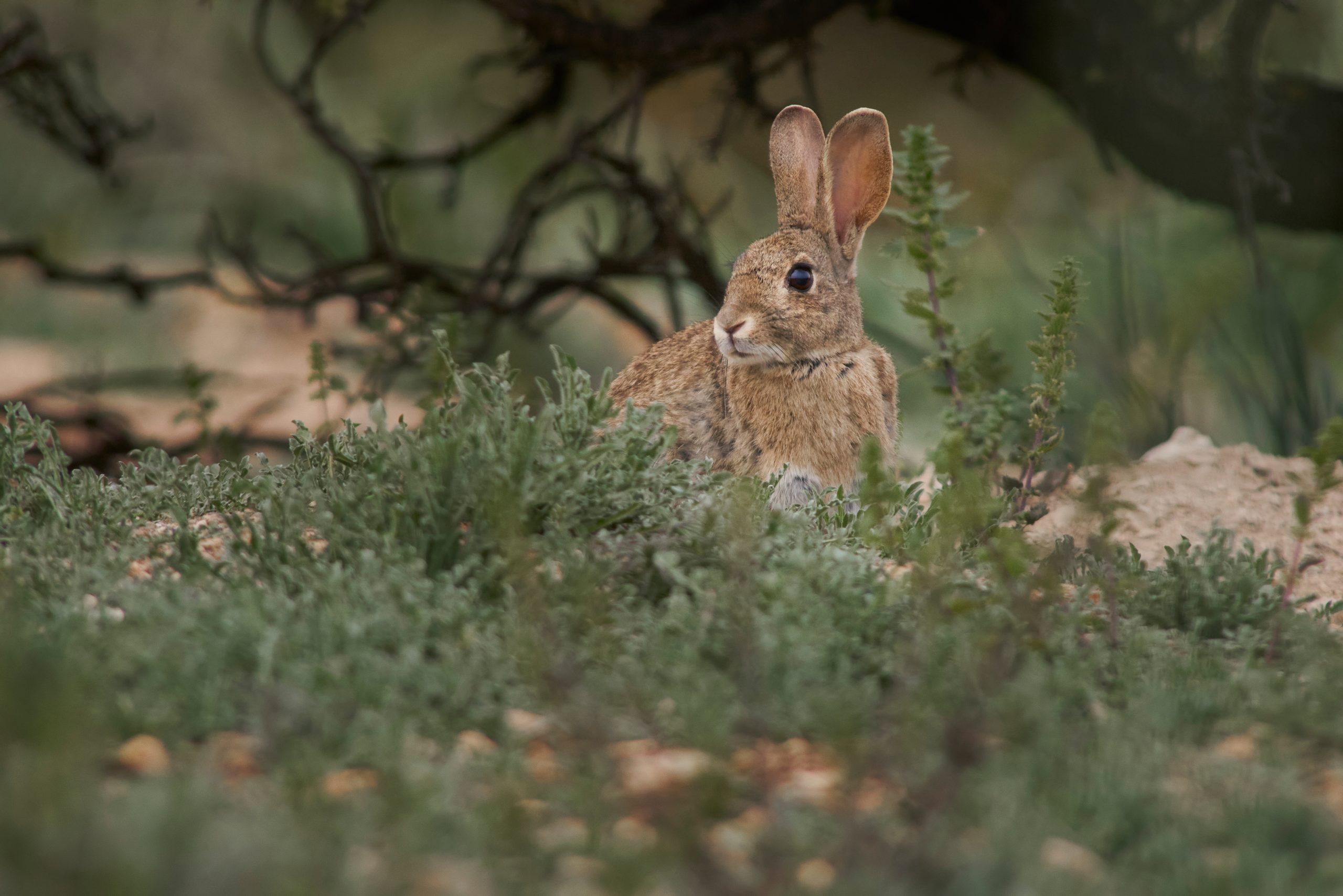The European rabbit (Oryctolagus cuniculus) is an emblematic species of Portuguese forests. Despite being acknowledged for both its historical presence and ecological importance, this small mammal is on the verge of extinction. Learn more about this species and its assorted roles in the workings and maintenance of Iberian ecosystems’ biodiversity.
With a small and agile body, the European rabbit species that can be found in Portugal belongs to the subspecies Oryctolagus cuniculus algirus and stands out for its greyish coat with yellowish or brown tones and white fur on the belly and the underside of the tail. It has well-developed hind legs, ideal for fast running and jumping, and long ears, up to 7 centimetres long, allowing it to hear the sounds around with precision. Males and females are not much different (sexual dimorphism), although the female is slightly larger and heavier.
The reproductive period depends on grazing quality and abundance and generally occurs between November and June. Each female can have between 3 to 6 pups per litter, which reach sexual maturity a few months after they are born.
Despite sharing the same family as hares (Leporidae), the two animals are easy to tell from one another for their size – the rabbit is smaller – and for their different types of hind legs and ears – hare ears are larger.
The European rabbit also has a sharp vision in low light and normally prefers twilight and the night to feed and move around. During the day, these rabbits stick to burrows and dense bush areas, where they feel protected from predators.





